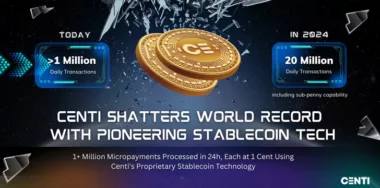| Getting your Trinity Audio player ready... |
Two lawmakers have said that the United States Securities and Exchange Commission’s (SEC) guidelines that dictate how financial firms handle accounting for digital assets are flawed and only put investors at greater risk.
In March 2022, the SEC released Staff Accounting Bulletin 121 (SAB 121), a policy guideline that outlined, for the first time, how virtual asset service providers (VASPs) must handle accounting for digital assets.
Among other things, SAB 121 dictates that VASPs must record a liability and a corresponding asset on their balance sheets at fair value for users’ digital assets in their custody. In essence, VASPs must maintain their users’ digital asset holdings on their own balance sheets.
SAB 121 has come under intense criticism from the industry, lawmakers, and some regulators. The latest to attack it is Sen. Cynthia Lummis (R-WY) and Rep. Patrick McHenry (R-NC), who chairs the House Financial Services Committee.
#NEW: Following @SECgov's Staff Accounting Bulletin 121, Chairman @PatrickMcHenry and @SenLummis sent a letter to prudential regulators requesting clarification on guidance for the accounting treatment of digital assets.
👇Read more 🔗https://t.co/BsEGmAwmk5 pic.twitter.com/6GpL3nWDsr
— Financial Services GOP (@FinancialCmte) March 2, 2023
In a letter to four banking regulators, the two lawmakers criticized the SEC’s guidelines, claiming that investors are now at greater risk. They further pointed out that SAB 121 only alienates the industry from the regulated banking entities.
“However, SAB 121 places customer assets at greater risk of loss if a custodian becomes insolvent or enters receivership, violating the SEC’s fundamental mission to protect customers,” they stated.
The two legislators, who are central to the push for America’s Bitcoin regulations, addressed the letter to the Federal Reserve, the Office of the Comptroller of the Currency (OCC), the Federal Deposit Insurance Corporation (FDIC), and the National Credit Union Administration (NCUA).
The SEC is doing more harm than good
SAB 121 has been under intense criticism since it became official in April 2022. One of its earliest critics was Hester Peirce, the digital asset-friendly commissioner at the SEC who has earned the moniker ‘Crypto Mom.’
Immediately after the SEC released the guidelines, Peirce described them as “yet another manifestation of the [SEC’s] scattershot and inefficient approach to crypto.”
Senator Lummis was also an early critic of the guidelines, joining four other legislators to jot a letter to chairman Gary Gensler in which they called for a withdrawal of SAB 121.
In her latest effort, the Wyoming senator noted that some of last year’s industry events have proven that SAB 121’s requirements would endanger investors.
“A recent decision in the Celsius bankruptcy, which classified all Celsius’ customers as unsecured creditors, and therefore at the back of the line to recover their assets, highlights the legal risk of effectively forcing customer custodial assets to be placed on balance sheet,” Lummis said.
Under financial laws in the U.S., custodial assets are not included on the balance sheet. This is because investors get to retain ownership of these assets, and the financial institutions are prohibited from accessing them for any proprietary trading.
SAB 121 deviates from this norm.
The guideline has already had a big impact on digital asset firms. Starting last year, Coinbase (NASDAQ: COIN) has been including “customer crypto assets” and matching “crypto asset liabilities” on its financial reports. With the change, Coinbase is no longer just hosting its users’ wallets; it’s also taking custodial responsibility for each digital asset owned by its users.
Crypto companies must show liabilities equal to ALL customer crypto assets, according to SEC's new rule SAB 121 issued in March 2022.@coinbase complied for their Q2 filing and now shows an $88B "customer crypto liabilities" item. https://t.co/59029Pr2LE
— Cory Klippsten 🦢 #Bitcoin is for everyone (@coryklippsten) August 15, 2022
“In sum, the effect of SAB 121 is to deny millions of Americans access to safe and secure custodial arrangements for digital assets,” Rep. McHenry and Sen. Lummis say in their letter.
The two want the four banking regulators to indicate whether they were involved in the making of the directive. They also want the watchdogs to take a stand and reveal if they are opposed to SAB 121.
Watch: Law & Order Regulatory Compliance for Blockchain & Digital Assets
New to blockchain? Check out CoinGeek’s Blockchain for Beginners section, the ultimate resource guide to learn more about blockchain technology.








